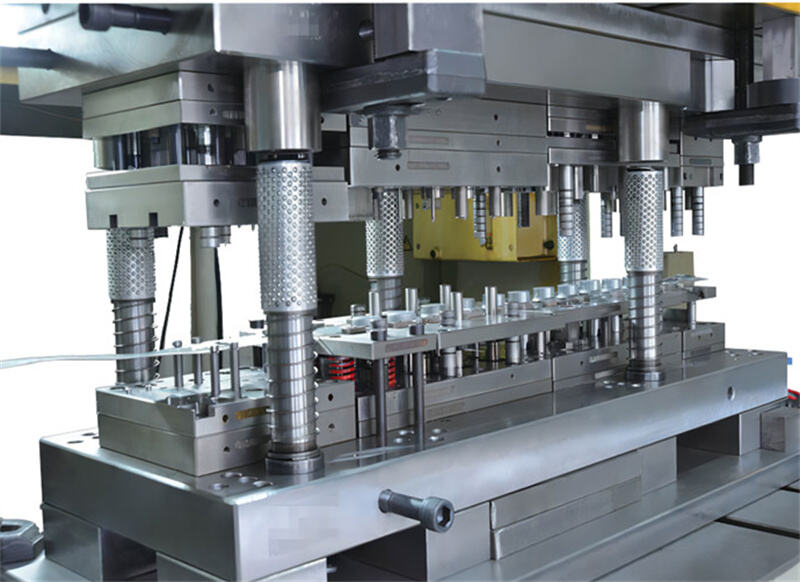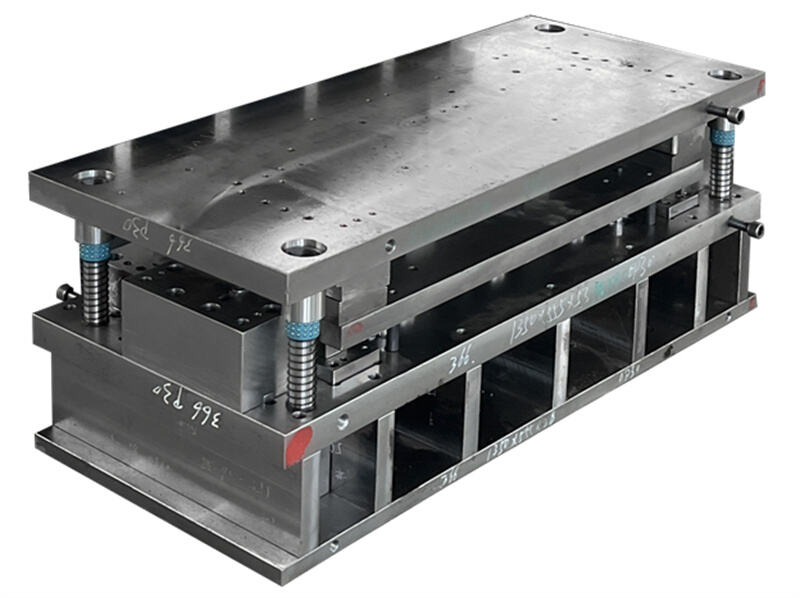Полное руководство по ценообразованию на штампы для листовой штамповки в автомобилестроении
Введение: почему штампы важны в автомобилестроении
Штампы играют решающую роль при производстве автомобильных деталей. По сравнению с литьем и ковкой, штампованные детали обладают рядом преимуществ: они тоньше, более однородные, легче и прочнее. Эти характеристики делают штамповку одним из самых экономически эффективных и широко используемых процессов в современном автомобилестроении.
Для компаний, которые занимаются производством машины для штамповки , цена является ключевым фактором, на который обращают внимание покупатели автомобильных запчастей. В этом руководстве раскрывается структура ценообразования штампов и факторы, влияющие на нее.

Основные компоненты ценообразования штампов
1. Материальные затраты
Материалы являются основой каждого штампа и обычно включают высококачественную импортную сталь, используемую для изготовления пуансонов и матриц. Эти материалы также должны пройти термическая обработка чтобы обеспечить долговечность.
2. Стоимость термообработки
Термообработка необходима для повышения прочности и долговечности деталей штампов. Существует два основных типа:
Стандартная термическая обработка : Применяется для крупных деталей с низкой точностью; средняя стоимость составляет около $1,5/кг.
Вакуумная термообработка : Используется для небольших деталей высокой точности; дороже, но минимизирует деформацию.
3. Стоимость проволочной резки
Стоимость проволочно-вырезного станка (электроэрозионной обработки) рассчитывается по площади:
Быстрая проволочная резка : Примерно $0.0007 за мм²
Медленная проволочная резка : Примерно $0.003 за мм² Формула: Площадь = Периметр x Высота (на основе оценки CAD-модели)
4. Стандартные компоненты
Стандартные компоненты обычно включают:
Пружины : Цветовая маркировка по прочности (зеленый и коричневый = тяжелые, красный = средние, синий/желтый = легкие)
Направляющие колонны и втулки
Винты и крепежные элементы
5. Стоимость рабочей силы
Стоимость рабочей силы зависит от региона. Например, в Китае средняя дневная ставка для квалифицированных инструментальщиков составляет около $35/день.
6. Прочие расходы
К ним относятся:
-Испытательная оснастка и использование пресса
-Материал прототипа
-Сверление отверстий
-Стоимость проектных работ в CAD
-Стоимость управления проектом
7. Торговая наценка
После расчета всех вышеперечисленных затрат обычно добавляется наценка в размере 30–40% для покрытия прибыли. 
Факторы, которые следует учитывать при составлении сметы Штамповочная матрица
Даже при четкой ценовой структуре каждое предложение должно разрабатываться с учетом следующих факторов:
- Тип материала и толщина
Разные материалы (например, алюминий и высокопрочная сталь) оказывают большое влияние как на конструкцию штампа, так и на его стоимость.
- Объем выпускаемых деталей и ожидаемый срок службы инструмента
Высокие объемы производства могут потребовать использования более качественных материалов для штампов или нескольких полостей, что влияет как на стоимость, так и на сложность процесса.
- Проектирование штампа и требования к изделию
Многоступенчатые последовательные штампы, штампы для переноса заготовок или комбинированные штампы требуют различного уровня затрат на проектирование и изготовление.
- Запасные части и послепродажное обслуживание
Включение резервных компонентов или предоставление плана сервисного обслуживания увеличит общую стоимость заказа.
- Ответственность за пробную партию
Уточните, кто предоставляет материалы для пробной штамповки и сколько образцов необходимо поставить.
- Давление спецификации
Понимание клиентом тоннажа пресса, размера стола и уровня автоматизации помогает оптимально спроектировать штамп.
Почему важна точная стоимость штампа
Точное ценообразование приносит пользу не только поставщику — оно также гарантирует клиенту прозрачность затрат и экономическую целесообразность. Четко структурированное штамп для металла предложение помогает:
- Избежать скрытых расходов
- Установить реалистичные сроки проекта
- Укрепить доверие между поставщиком и клиентом
Наша команда в Shaoyi Metal Technology понимает, насколько эти предложения важны для успеха проекта. Вот почему мы уделяем внимание тщательному расчету затрат и точному проектированию штампов, адаптированным под ваши производственные потребности.
Заключение: Прозрачное коммерческое предложение — выигрыш для обеих сторон
Когда речь идет об автомобильных штампах, цена — это не просто число. Это отражение конструкции, материалов, качества и обслуживания. Понимая, как каждый компонент влияет на общую стоимость, покупатели и поставщики могут совместно производить качественные детали эффективно и экономично.
Хотите получить индивидуальное предложение для вашего следующего проекта штампа? Свяжитесь с нашей командой по производству штампов, чтобы узнать, как мы можем помочь в решении ваших задач по штамповке.
 Малые партии, высокие стандарты. Наша служба быстрого прототипирования делает проверку точнее и проще —
Малые партии, высокие стандарты. Наша служба быстрого прототипирования делает проверку точнее и проще —
